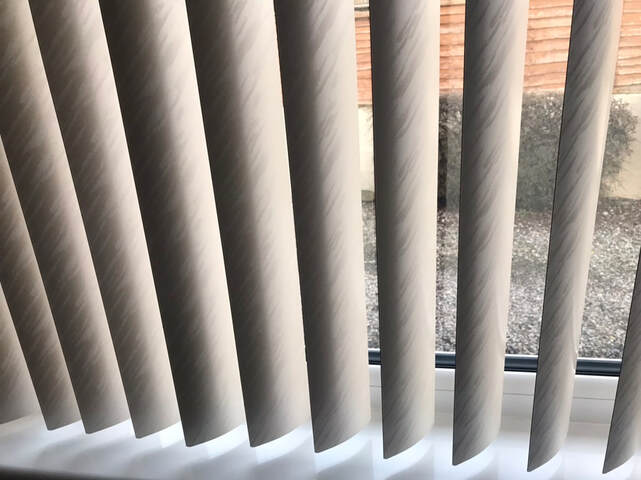Get a Clean & Fresh Look with White PVC Vertical Blinds
PVC blinds
certainly are a fantastic option for windows, and they come in many
types of materials, from wooden to fabric, to aluminum, to PVC. PVC
vertical blinds are a great choice if you will want low-cost, durable
option that is an easy task to maintain. They give many benefits beyond
their affordability, making them a popular option in several homes and
offices. In this short article, we'll walk you through whatever you need
to know about PVC vertical blinds, their advantages, how to put in and
maintain them, and how they compare to other options.
What're PVC Vertical Blinds?
PVC
vertical blinds are window coverings made with polyvinyl chloride
materials. The fabric is thermal coated with UV stabilized and
anti-fungal additives to create them durable and long-lasting.

Features of PVC Vertical Blinds
1) Affordability: PVC is really a cheap material, which explains why PVC vertical blinds are a fantastic option for those on a budget. They cost a portion of higher priced options like wooden and fabric blinds.
2) Durability: PVC vertical blinds are hard-wearing and sturdy. PVC's plastic composition makes it resilient to moisture, wear, and tear, therefore it lasts more than some forms of materials, especially in damp or humid conditions.
3) Easy Maintenance: They're easy to completely clean and maintain. PVC blinds could be wiped down with a damp cloth or sponge, perfect for busy households and offices.
4) Provides Privacy and Light Control: With PVC vertical blinds, you can control the quantity of sunlight that enters the area, and the extent of privacy you need.
5) Customizable styles: PVC vertical blinds can be found in various designs, textures, colors, and patterns, rendering it easy to match your decor.
How to Install PVC Vertical Blinds
Installing PVC vertical blinds is straightforward and can be achieved by anyone. However, it's essential to follow along with the manufacturer's instructions to make certain a protected and professional-looking fit. Here's a quick guide to installing PVC vertical blinds;
1) Assess the Window: Gauge the window's width and height to find out the right size of blinds for you.
2) Bracket Installation: Screw the brackets or mounting brackets onto the wall or window frame evenly.
3) Headrail Installation: Insert the blinds'headrail to the brackets or mounting brackets then attaching the valance.
4) Slat Installation: Snap the slats in to the headrail by placing them 1 by 1 into the hooks built into the headrail. Ensure they are all facing the best direction and align them correctly.
5) Test the Blinds: Ensure that the blinds function properly by opening and closing, tilting the slats, or pulling the cords.
Just how to Maintain PVC Vertical Blinds
Although PVC vertical blinds require minimal upkeep, regular cleaning is vital to preserve their quality and longevity. Below are a few maintenance methods for PVC vertical blinds;
1) Dust the Blinds Regularly: Make use of a soft cloth, brush or vacuum to get rid of any dust or debris that may accumulate on top of the blinds.
2) Clean with Damp Cloth: Wipe down the blinds with a wet cloth or sponge for thorough cleaning. Use mild soap or detergent if you can find stains or spots.
3) Avoid Harsh Chemicals: Chemicals like bleach or strong cleaning products can damage the material and affect the blind's appearance.
4) Check and Replace Broken Slats and Parts: Check for almost any broken or loose parts and replace them when required.

In Short:
PVC vertical blinds certainly are a fantastic selection for the budget-conscious, providing a cost-effective and durable solution that adds beauty and class to any room's decor. With their easy installation and minimal maintenance, PVC vertical bli
Comments
Post a Comment